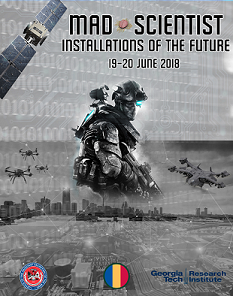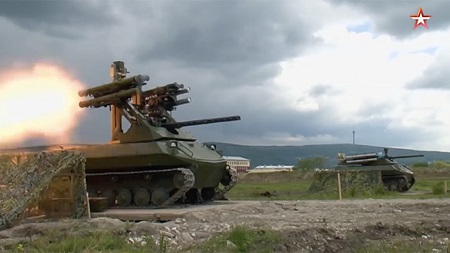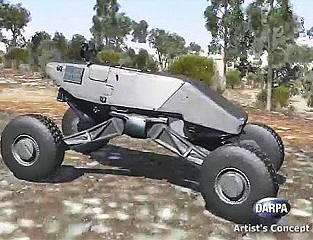 On 19-20 June 2018, the U.S. Army Training and Doctrine Command (TRADOC) Mad Scientist Initiative co-hosted the Installations of the Future Conference with the Office of the Assistant Secretary of the Army for Installations, Energy and Environment (OASA (IE&E)) and … Read the rest
On 19-20 June 2018, the U.S. Army Training and Doctrine Command (TRADOC) Mad Scientist Initiative co-hosted the Installations of the Future Conference with the Office of the Assistant Secretary of the Army for Installations, Energy and Environment (OASA (IE&E)) and … Read the rest
63. Russian Ground Battlefield Robots: A Candid Evaluation and Ways Forward
[Editor’s Note: We are pleased to present Mad Scientist Sam Bendett‘s informative guest blog post on the ramifications of current Russian Unmanned Ground Vehicle (UGV) trials in Syria for future autonomous combat systems on the battlefield. Please note … Read the rest
62. Installations of the Future
 Mad Scientist Laboratory is pleased to announce that Headquarters, U.S. Army Training and Doctrine Command (TRADOC) is co-sponsoring the Mad Scientist Installations of the Future Conference this week (Tuesday and Wednesday, 19-20 June 2018) with the Office of the Assistant … Read the rest
Mad Scientist Laboratory is pleased to announce that Headquarters, U.S. Army Training and Doctrine Command (TRADOC) is co-sponsoring the Mad Scientist Installations of the Future Conference this week (Tuesday and Wednesday, 19-20 June 2018) with the Office of the Assistant … Read the rest
61. Base in a Box
[Editor’s Note: Mad Scientist Laboratory is pleased to publish the following guest blog post by Mr. Lewis Jones. Originally a “Letter Home” submission to the Call for Ideas associated with the Mad Scientist Installations of the Future Conference… Read the rest
60. Mission Engineering and Prototype Warfare: Operationalizing Technology Faster to Stay Ahead of the Threat
[Editor’s Note: Mad Scientist is pleased to present the following post by a team of guest bloggers from The Strategic Cohort at the U.S. Army Tank Automotive Research, Development, and Engineering Center (TARDEC). Their post lays out a … Read the rest





